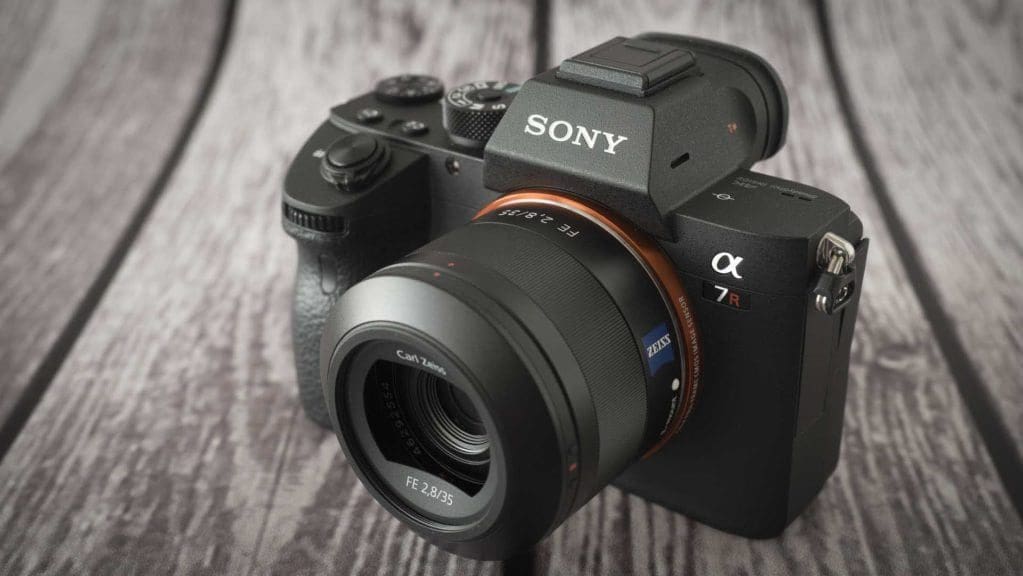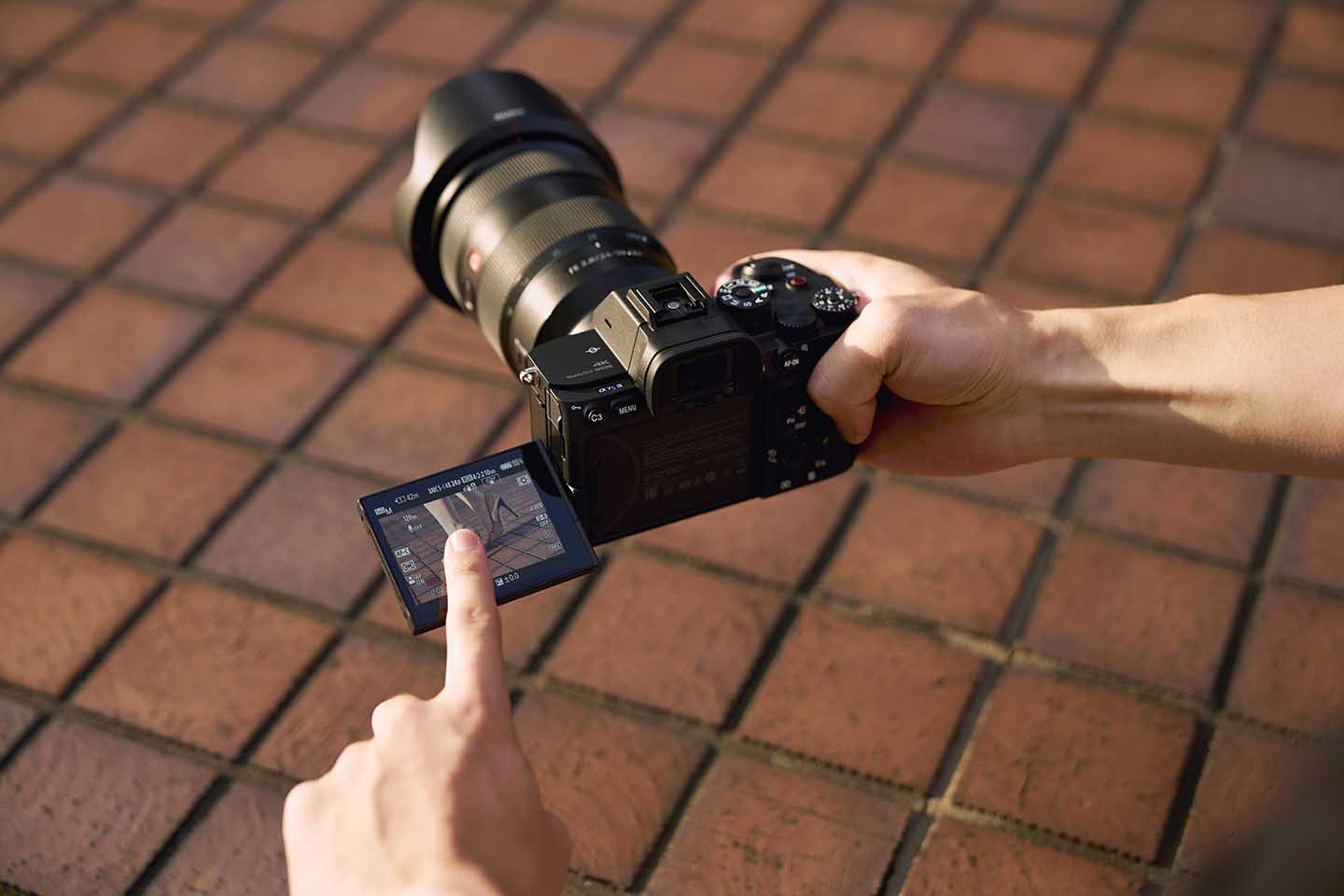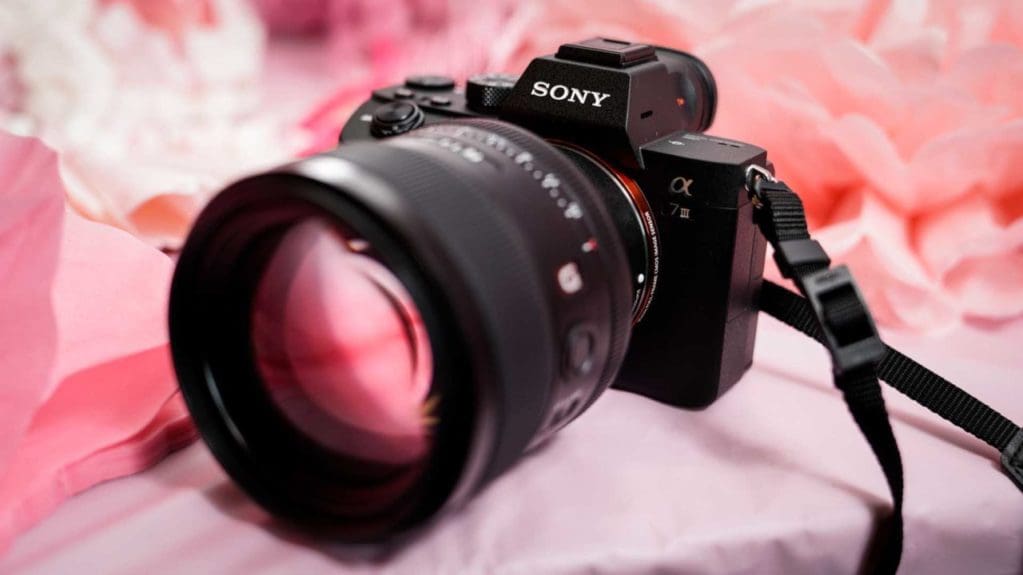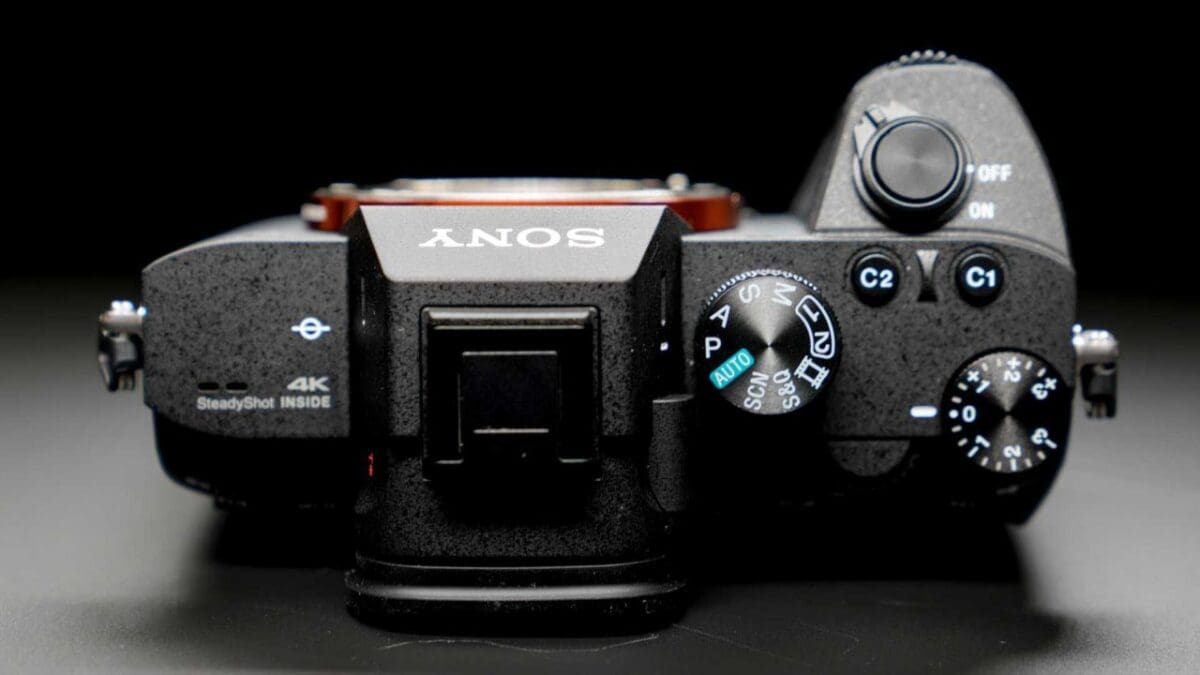[ad_1]
In the early days of the Sony Alpha A7-series there was the A7, the A7R and the A7S. Things were quite simple. The A7S was the one for video, the A7R was the high-resolution model and the A7 was the more affordable option. It was fairly easy to choose the right camera.
The situation has got a bit more complicated since then. We’ve had the introduction of the Mark II and Mark III versions of each camera and Mark IV version of the A7R and A7, and now the Sony A7R V has arrived.
And let’s not forget the Sony A7C.
So how do you know which is the best Sony A7 camera to choose when there are so many available new and secondhand? Well, in some ways the original distinguishing features still help.
For a deeper dive into the many different camera types and features available, check out our range of camera buying guides.

Sony A7R series = High Resolution
With 61 million effective pixels on their full-frame sensors, the Sony A7R IV and Sony A7R V are the highest resolution cameras in the A7 range. Their high pixel counts enable the two camera to capture a huge amount of detail and, thanks to Sony’s fantastic sensor-building knowhow and the BSI design, noise is controlled well. That said, we’d recommend making ISO 12,800 the top value you use if possible.
Meanwhile, the 42.4Mp A7R III has the same sensor as the A7R II. Both of them resolve more detail than the original A7R which has a 36.4Mp sensor, but they can’t match the A7R IV or A7R V.
Where the A7R III scores over the A7R II for image quality is with the improved dynamic range at the lower sensitivity settings. However, we’re only talking about around 0.5EV. And while that could be significant for landscape photography, if you use ND grads or composite images, then it’s not THAT big a deal.
The A7R III also feels more rounded than the models that go before it. Its autofocusing system is impressive so it’s even suitable for shooting sport. The very best focusing system, however, is in the A7R V which has 693 phase detection points and the very latest subject detection options which include Human (Right/Left Eye Select) / Animal (Right/Left Eye Select) / Bird / Insect / Car / Train / Airplane, all of which work in stills and video mode.
Sony has improved the handling of each successive model. Consequently, the A7R V’s handling is significantly better than the A7R’s and quite a bit better than the A7R IV’s. Sony’s most recent camera feature a touch-screen, but Sony only made full use of it with the A7R V. With the A7R IV and A7R III, it’s only really useful for zooming in and out of images or setting the AF point.
There’s also a joystick that simplifies setting the AF point on the A7R III, A7R IV and A7R V. Of course, if you shoot still life, macro or landscape photography that may not be a major issue for you. This is a bit fatter and easier to find on the A7R IV and A7R V than the Mark III camera.
Another significant change that Sony has made with the A7R V in comparison with earlier models is that as well as being slightly larger (3.2-inches vs 3-inches) and higher-resolution (2,095,104-dots vs 1,440,000-dots), the A7R V’s screen is mounted on a 4-way tilting mechanism. It’s like a tilting and vari-angle screen combined whereas the A7R IV has a standard tilting screen.
Get the best deals on the full range of Sony A7R cameras at Amazon UK and Amazon US.
Which is the best Sony A7R-series camera?
If you find the Sony A7R available at a bargain price, it’s worth considering, but it wouldn’t be our first choice of the A7R-series cameras. Its AF system isn’t a patch on the latest version and the handling can get annoying. The Eye AF (human and animal) that’s available with the A7R III and A7R IV, is superb, but if you want it to work for humans in video you’ll have to opt for the A7R IV or A7R V. The new Sony A7R V makes some very nice upgrades on the A7R IV, including the ability to set the subject tracking to Human (Right/Left Eye Select) / Animal (Right/Left Eye Select) / Bird / Insect / Car / Train / Airplane.
If you don’t need quick AF point selection and the fastest focusing, nor the improved dynamic range, then the A7R II looks like a good solid proposition. It also makes a significant saving on the A7R III. However, if you can afford it, the A7R IV captures a lot more detail and is more affordable than the newer A7R V.
We haven’t finalised our full Sony A7R V review yet, but we’re already confident that it’s one of the very best cameras out there.

Sony A7S-series = Video
While the A7S, A7S II and A7S III are intended as the video cameras, Sony hasn’t stinted on the video features of the A7R II, A7R III, A7R IV, A7R V and A7 III. However, where the A7S models win is with their low-light capability. They all have a native sensitivity that tops out at ISO 102,400.
Their low (12Mp) pixel counts mean that they handle noise extremely well.
What the A7S and A7S II don’t do well in low light, however, is focus. That’s not an issue for many videographers who routinely focus manually, but it’s a little behind the times. Thankfully, the Sony A7S III addresses this. It has a Hybrid AF system with 759 phase-detection points and 425 contrast-detection points, Real Time Eye AF (Human and Animal) for stills and video. Its AF system is also claimed to operate at down to -6EV.
Naturally, if you’re considering an A7S series camera, video is your primary concern. The A7S and A7S II are both proven in this area and deliver great quality results. But the A7S III is a more capable 4K camera.
It has full-sensor readout and can shoot 4K video at up to 120p or full HD footage at up to 240p, with full-sensor readout no pixel-binning and with the hybrid autofocus system in action.
There’s also 10-bit colour depth and 4:2:2 colour sampling available in all recording formats.
In addition, Sony has introduced new/improved codecs including XAVC S-I 4K (All-Intra), XAVC HS 4K (Long GOP) and XAVC S 4K (Long GOP), plus there’s S-Log2 and S-Log3 and improved S-Gamut3 and S-Gamut3.Cine colour science.
The A7S III also supports 16-bit raw video output to an external recorder via HDMI – that’s a first for the A7S-series. The output is full-frame 4264 x 2408 16-bit with a choice of 59.94p/50p/29.97p/25p/23.98p frame rates and colour spaces.
Sony has also upgraded the A7S III’s dual card slots so that as well as SD/SDHC/SDXC UHS-II media, they can accept the new CFexpress Type A cards. These cards are required to get the top-quality results in the enhanced S&Q (Slow and Quick) modes.
Sony has also responded to one of the biggest requests made for the A7S III and given it a vari-angle touchscreen. That means it’s easier to see the scene then you’re shooting above or below head-height, and for many, makes an external monitor unnecessary.
If you like the idea of a vari-angle screen for vlogging but you’re not sure keen on the A7S III’s price tag, take a look at the Sony A7C. Announced in September last year, it has a first-rate 24Mp full-frame sensor, the Bionz X processing engine and excellent autofocusing capability along with a reasonable video specification. There’s no raw video capability but you shoot high-quality 4K footage in S-Log2 or S-Log3.
However, Sony hasn’t given the A7C the A7S III’s revised menu structure or its excellent touch-control. Also as a 0.39-inch type, A7C’s viewfinder is also pretty small for a full-frame camera.
Get the best deals on the full range of Sony A7S series cameras at Amazon UK and Amazon US.
Which is the best Sony A7S-series camera?
With the Sony A7S III now on the market, there are likely to be some bargains available on the A7S II. That camera has been doing a great job for many videographers and the A7S III doesn’t make an upgrade in resolution. Where it wins, however, is with the improved handling and feature set that should make creating great 4K video that bit easier.
You can order the Sony A7S III from Adorama in the US and Wex Photo Video in the UK.

Sony A7 series = The Affordable Option
While the A7 II was pretty decent, the Sony A7 III is much better. What’s more, at launch Sony priced it quite aggressively for a full-frame camera at £2000/$1,998 (body only) or £2,500/$2,198 with the 28-70mm lens. However, its price has fallen since launch.
Those are still not figures to be sniffed at, but that money brings you a very capable AF system, that’s streets ahead of the A7’s and A7 II’s. It also brings improved handling with the mini-joystick control, a touch-screen and twin card ports.
The A7 III’s full-frame sensor also has a pixel count of 24.2 million, which as well as being a popular figure, allows a good balance between detail resolution, file size and noise control. Add in 4K (3840 x 2160) video recording with S-Log plus a battery that has a much longer life than the A7 II’s and the Mark III looks like an easy decision.
On 21st October 2021, the Sony A7 IV was unveiled to the world and it makes some significant steps up in comparison with the A7III. Most notably, the A7 IV has a 33Mp Exmor R BSI (backside illuminated) CMOS sensor which means its pixel count is 36% higher than the A7 III’s.
Sony has also paired the A7 IV’s sensor with its latest Bionz XR processor, previously seen in the Sony A7S III and Sony A1. This extra processing power enables the A7 IV to have the same native sensitivity range (ISO 100-51,200) despite its hike in resolution.
The maximum continuous shooting rate is also the same at 10fps.
Another area where the Sony A7 IV distinguishes itself from the A7 III is with the autofocus system. That’s because the A7 IV has Real-time Tracking AF and Eye AF from humans, animals and birds for both stills and movies.
The A7 III gained real-time AF for animals but not birds with a firmware update and only for stills, not video.
So far we’ve only been able to shoot a few images for our early Sony A7 IV review, but the Eye AF seems more responsive with humans and animals than the A7III.
On the video front the headline figures for the A7IV are 4K recording in XAVC S-I format at up to 60fps with 10-bit 4:2:2 colour to either an on-board memory card or via HDMI to a recorder.
The 4K 30p video is oversampled from 7K using the full-frame, but 4K 60p is oversampled from 4.8K in Super 35 (APS-C) mode so there’s a 1.5x crop.
That’s a nice improvement on the A7 III which doesn’t have 10-bit colour nor 4K 60p capability and applies a 1.2x crop to 4K 30p footage.
While the specification improvements might not seem dramatic to some, the handling of the A7IV is dramatically enhanced. For a start, the electronic viewfinder has a nice boost in resolution as it’s a 3.69-million-dot unit rather than a 2.36-million-dot device, and it has a refresh rate of up to 120fps.
In addition, the A7 IV has a 3-inch 1,036,800-dot vari-angle screen rather than a tilting screen. This makes it much more versatile and it can be angled to help with portrait orientation shooting as well as landscape. It can even be flipped round for vlogging and shooting selfies.
Sony has also given the A7IV the revised menu arrangement that first appeared on the A7S III and later the A1. It’s considerably more user-friendly than the old menu system.
Sony also has another ‘affordable’ full-frame camera, the A7C, which is a bit more compact. However, its current street price is around the same as the A7 III’s and although it brings a vari-angle screen, in other respects it’s not quite so well specified. Unless you really want a vari-angle screen, we’d recommend going for the A7 III, but if you can afford it, the Sony A7 IV has the best of both worlds.
Get the best deals on the full range of Sony A7 series cameras at Amazon UK and Amazon US.
Which is the best Sony A7-series camera?
The Sony A7 III can be bought for around £1,699/$1,998, which is temptingly below the £2,499/$2,498 launch price of the A7 IV. But as well as the resolution boost and improvement to the AF system, the new camera makes some very nice upgrades to the handling so we’d be sorely tempted to save a little longer.
Which Sony A7 camera should you choose?
If you’re still not sure about which Sony A7 camera is best for you at this stage and you’re desparate to make purchase, plump for the A7 IV. It’s a great all-rounder and it’s designed with enthusiast photographers in mind. It’s a camera with all of the specification you need right now, plus plenty of room to grow with.
With the A7 IV, you’ll be able to shoot a wide range of subjects including fast-moving sport and action. Noise is also controlled well and the level of detail in images won’t disappoint.
If you’re keen to get more resolution then the A7R V is the best choice and its AF system is incredible. If video is your primary concern then go for the Sony A7S III.
Of course, if you’re really torn and you feel you might need to be able to combine high-resolution stills shooting with high-speed, blistering AF and 16-bit raw video recording, the 50Mp Sony A1 is the camera for you. It is currently available for £6,500 / $6,500 but it looks like the camera that will see many professional photographers, including sports, wedding and journalist photographers switch to mirrorless photography.

Article Name
Which Sony Alpha A7 camera? How to choose the right model
Description
With 8 Sony Alpha A7-series cameras available, you might be wondering which one to buy. We take you through the options to help you choose the right A7-series camera for you and your photography.
Author
Angela Nicholson
Publisher Name
Camera Jabber
Publisher Logo

[ad_2]
